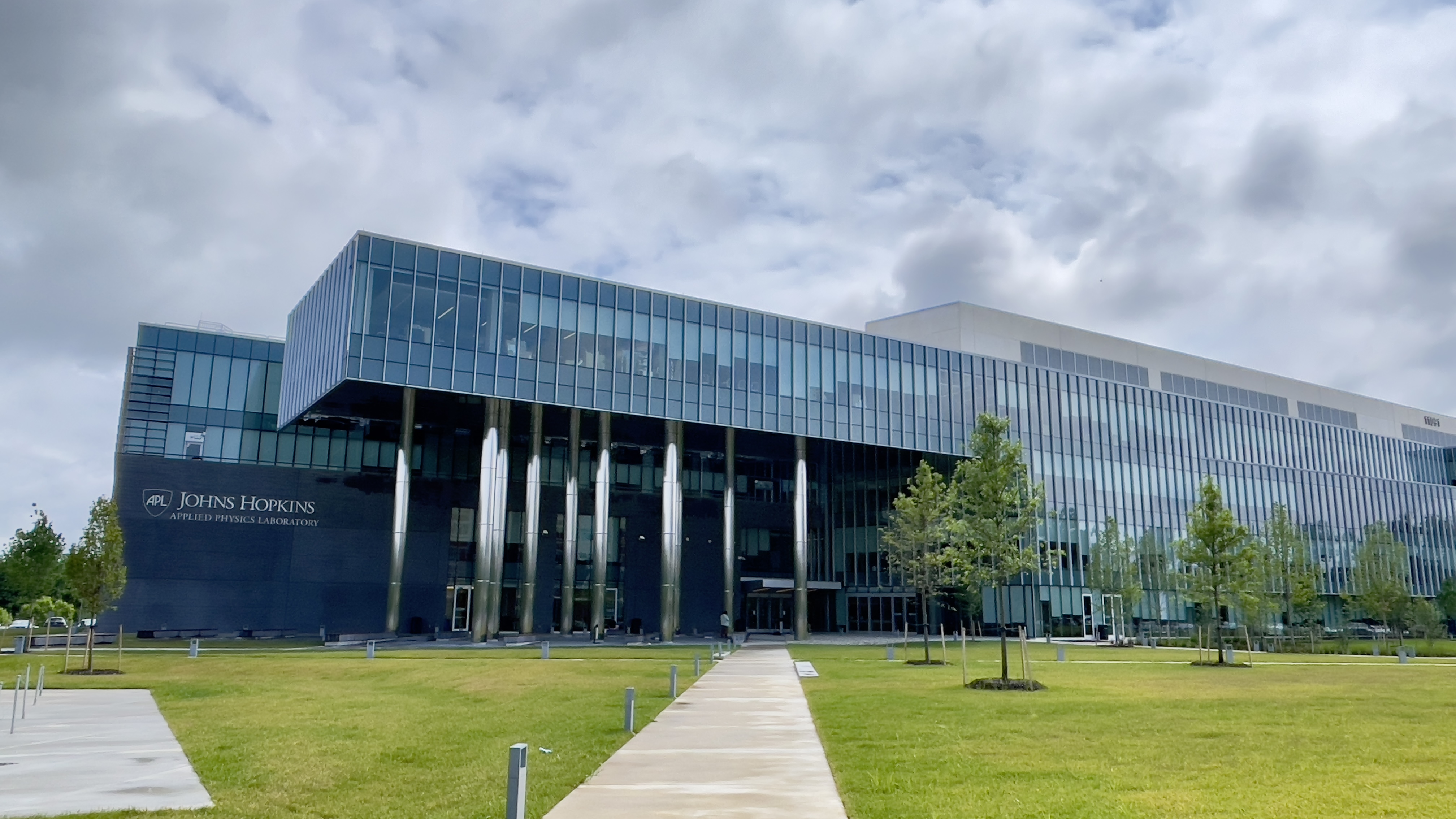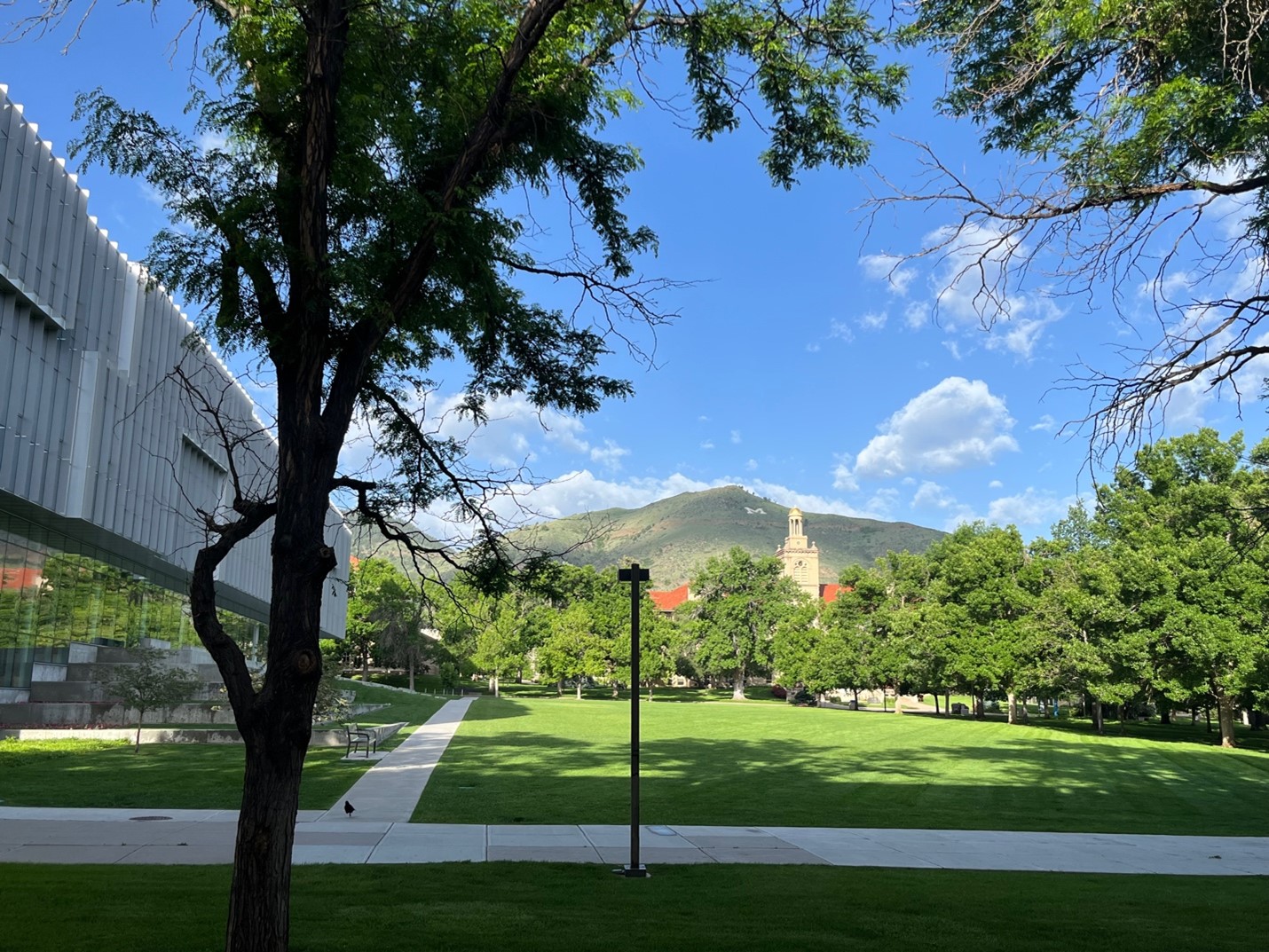The Shirley D. Curson Education Plus Fund in Planetary Sciences and LPL (formerly the Shandel Education Plus Fund) was established by Shirley Curson, a generous donor and friend of LPL, for the purpose of supporting travel expenses outside the state of Arizona during summer break. The award is open to students in the Department of Planetary Sciences and Lunar and Planetary Laboratory who propose to fund study, museum visits, special exhibits, seminars, instruction, competitions, research and other endeavors that are beyond those provided by the normal campus environment and are not part of the student’s regular curriculum during the recipient’s school year.
2022 Recipients: Xiaohang Chen, Emileigh Shoemaker, Lucas Smith, Jada Walters
Xiaohang Chen
 The Curson Travel Award supported my travel to Johns Hopkins Applied Physics Laboratory (APL), Laurel Maryland, to attend the Parker Two meeting from June 21-24, 2022. The Parker Two meeting was the second annual Parker Solar Probe (PSP) workshop and the first in-person meeting since the launch of the spacecraft on August 12, 2018. The workshop intended to highlight the most recent discoveries from PSP and strengthen the collaborations between the communities on the mission’s main science objectives: (1) Trace the flow of energy that heats and accelerates the solar corona and solar wind; (2) Determine the structure and dynamics of the plasma and magnetic fields at the sources of the solar wind; and (3) Explore mechanisms that accelerate and transport energetic particles.
The Curson Travel Award supported my travel to Johns Hopkins Applied Physics Laboratory (APL), Laurel Maryland, to attend the Parker Two meeting from June 21-24, 2022. The Parker Two meeting was the second annual Parker Solar Probe (PSP) workshop and the first in-person meeting since the launch of the spacecraft on August 12, 2018. The workshop intended to highlight the most recent discoveries from PSP and strengthen the collaborations between the communities on the mission’s main science objectives: (1) Trace the flow of energy that heats and accelerates the solar corona and solar wind; (2) Determine the structure and dynamics of the plasma and magnetic fields at the sources of the solar wind; and (3) Explore mechanisms that accelerate and transport energetic particles.
I presented a poster of my recent research about parallel diffusion coefficient obtained from PSP measurements. Diffusion coefficients are the fundamental aspect of particle transport theory, however, remaining incompletely understood. They are widely used in studying the transport and distribution of high-energy charged particles in the heliosphere, such as cosmic rays and solar-energetic particles. Based on the recent observations from Parker Solar Probe, we study the parallel diffusion coefficients as a function of the radial distance from the sun, which is the first observational study about the spatial distribution of diffusion coefficients in the inner heliosphere. I had chance to talk to several instrument team members and received many valuable comments on how to improve the results. The in-person workshop also allowed me to extend the collaboration on another project about the simulation of energetic particle acceleration at a fully 3D CME-driven shock. I presented the preliminary results of the project and organized a discussion during the meeting with Dr. Mihir Desai (APL), Dr. Athanasios Kouloumvakos (APL) and my advisor, Professor Joe Giacalone (LPL). All of them provided numerous positive feedback.
The Parker Two meeting offered a great opportunity to present my work and keep updated on the leading-edge research about PSP observations. Also, attending this workshop allowed me to extend my network and collaboration with the community as well as obtain a lot of new research ideas. Thanks again to the support of Curson Travel Award. It was really a wonderful experience to talk to so many friends and researchers in-person after two years of Zoom meetings.
Emileigh Shoemaker
 The Curson Travel Award supported my attending and presenting at the 19th International Conference on Ground Penetrating Radar at the Colorado School of Mines in Golden, CO. This conference brings together a highly focused group of scientists and industry professionals that use ground penetrating radar (GPR) to conduct investigations of the subsurfaces of Earth and other planets. My Ph.D. research uses GPR to investigate volcanic environments on Earth and Mars making this conference an important opportunity to share that research with subject matter experts and receive feedback.
The Curson Travel Award supported my attending and presenting at the 19th International Conference on Ground Penetrating Radar at the Colorado School of Mines in Golden, CO. This conference brings together a highly focused group of scientists and industry professionals that use ground penetrating radar (GPR) to conduct investigations of the subsurfaces of Earth and other planets. My Ph.D. research uses GPR to investigate volcanic environments on Earth and Mars making this conference an important opportunity to share that research with subject matter experts and receive feedback.
At the conference, I presented on my GPR investigation of the caldera of the Askja Volcano in Northern Iceland. This caldera hosts meters-thick slabs of buried ice that have been preserved by pumice and other eruptive products from eruptions of Askja in 1875 and 1961. We used this region of Iceland as a testbed for GPR field and analysis methods in support of future human and robotic exploration of the surfaces of the Moon and Mars. GPR will be an important tool in any future mission to the surfaces of those bodies when searching for similarly buried water ice deposits.
Presenting at this conference was significant as an early career scientist planning to continue working with GPR. I was able to meet other planetary scientists who use GPR to investigate other bodies and learn new methods for analyzing collected data. One day of the conference was devoted to introducing attendees to the various commercial GPR systems that are available. The Colorado School of Mines hosted a “treasure hunt” on a field filled with buried objects specifically designed for instruction of geophysical methods such as GPR. Users were challenged to locate and describe the buried objects with the different commercial GPR systems. This was both a fun and informative exercise. I was also exposed to the wider uses of GPR in other fields such as agriculture, archaeology, crime scene investigation, and the commercial sector. I now have a much broader perspective about the uses of GPR and have gained new colleagues and collaborators through the opportunity to attend this conference.
Lucas Smith
The Curson Travel Award supported my travel to Washington University in Saint Louis (WashU), where I spent two weeks training and collecting data on the Cameca NanoSIMS 50 ion probe. My graduate research is centered on the in-situ analysis of presolar grains in meteorites thought to be related to asteroid Bennu. Presolar or “stardust” grains are small (nm to micron sized) condensates that formed in the outflows of stars and stellar explosions before the formation of the solar system. These grains are found in the fine-grained matrix materials of meteorites and other primitive astromaterials and are only distinguishable by their extreme isotopic anomalies, which are tracers of the nucleosynthetic processes occurring in their parent star. The in-situ detection of presolar grains thus requires the high-spatial resolution and mass resolving power of Nanoscale Secondary Ion Mass Spectroscopy (NanoSIMS). With over 200 tunable parameters, the NanoSIMS is a complicated instrument with a steep learning curve and can require days of tuning before making measurements.
During the two weeks at WashU, I received training under my advisor, Dr. Pierre Haenecour, and was able to practice tuning the NanoSIMS while mapping carbon and oxygen isotopic compositions in the C3.00-ungrouped chondrite Chwichiya 002. From this data, I have identified multiple presolar grains that I am investigating further using the Hitachi HF5000 TEM in the Kuiper Facility at LPL. This data is a critical part of my written examination paper, which will be submitted to a peer-reviewed journal after I complete the exam. As the new NanoSIMS in the Kuiper Facility will not be delivered until the summer of 2023, this opportunity to collect data and obtain training was invaluable in allowing me to stay on track with my graduate research.
While the NanoSIMS measurements were running, I also had the opportunity to interact and make connections with students and faculty at WashU, including Dr. Brad Jolliff, director of the McDonnell Center for the Space Sciences. One of these opportunities was a tour of Dr. Kun Wang’s Isotope Cosmochemistry Laboratory, where his graduate student Mason Neuman was taking measurements on the bulk chemical composition of several meteorites that I am currently working on.
The experience and data I was able to obtain on this trip are incredibly valuable to both the progression of my graduate research and the development of ability to use the NanoSIMS ion probe, one of the most critical instruments in my research. Specifically, the NanoSIMS training I received will greatly facilitate my ability to begin measurements using the new instrument that is to be installed at LPL next year. This is particularly important, as I am hoping to assist with the NanoSIMS measurements of Bennu samples that will be returned by OSIRIS-REx shortly after installation of the NanoSIMS.
 |
 |
 |
|
A NanoSIMS 16O/17O isotope ratio image I collected during my trip to WashU. The four circles indicate presolar grains that are heavily enriched in 17O relative to the surrounding material.
|
Me in the NanoSIMS lab at WashU observing console output during an automated cycle for optimizing mass resolving power. | Front to back: Pierre Haenecour, Dr. Kun Wang, and myself in the cleanroom of Kun’s Isotope Cosmochemistry Laboratory. |
Jada Walters
In June, I was able to use the Curson Travel Award to travel to Princeton for a week of fruitful research collaboration with Dr. Jason TenBarge and Dr. James Juno. My proposed dissertation project involves working to expand the capabilities of the open-source computational software package Gkeyll1 from Princeton Plasma Physics Lab. The project involves utilizing Gkeyll’s 10-moment, multi-fluid solver capabilities to investigate the effects of pressure anisotropy-driven instabilities in astrophysical and space plasmas, including galaxy clusters, accretion flows, and the solar wind.
We began the week by installing the frontend scripting framework developed by Dr. Jason TenBarge on my laptop. This allowed me to begin plotting simulation output from Gkeyll’s linear fluid solver. Prior to the visit, I had begun simulations of the firehose instability using the linear solver PLUME2. We hoped to use this week to retrieve some initial comparisons of the parallel firehose instability between a kinetic linear solver like PLUME and the fluid Gkeyll framework. After implementing appropriate normalizations so that we could directly compare the results between PLUME and Gkeyll, we were able to produce plots that revealed some interesting initial differences between the two codes for a range of plasma beta values. After producing this type of comparison, we began installing the newest version of Gkeyll on my laptop so that I could also start running simulations with the nonlinear solver in Gkeyll. We completed several simulations using the nonlinear solver and were also able to plot quantities such as the growth rate. Apart from the research progress made, I was able to meet other members of the Gkeyll team such as Dr. Ammar Hakim. Overall, this opportunity allowed me not only to kickstart my thesis research project, but also foster a foundation for productive research collaboration on this project as it continues in the coming years.
1Documentation on Gkeyll is available at https://gkeyll.readthedocs.io/en/latest/
2Klein, K. G., and G. G. Howes (2015), Predicted impacts of proton temperature anisotropy on solar wind turbulence, Phys. Plasmas, 22(3), 032903.

